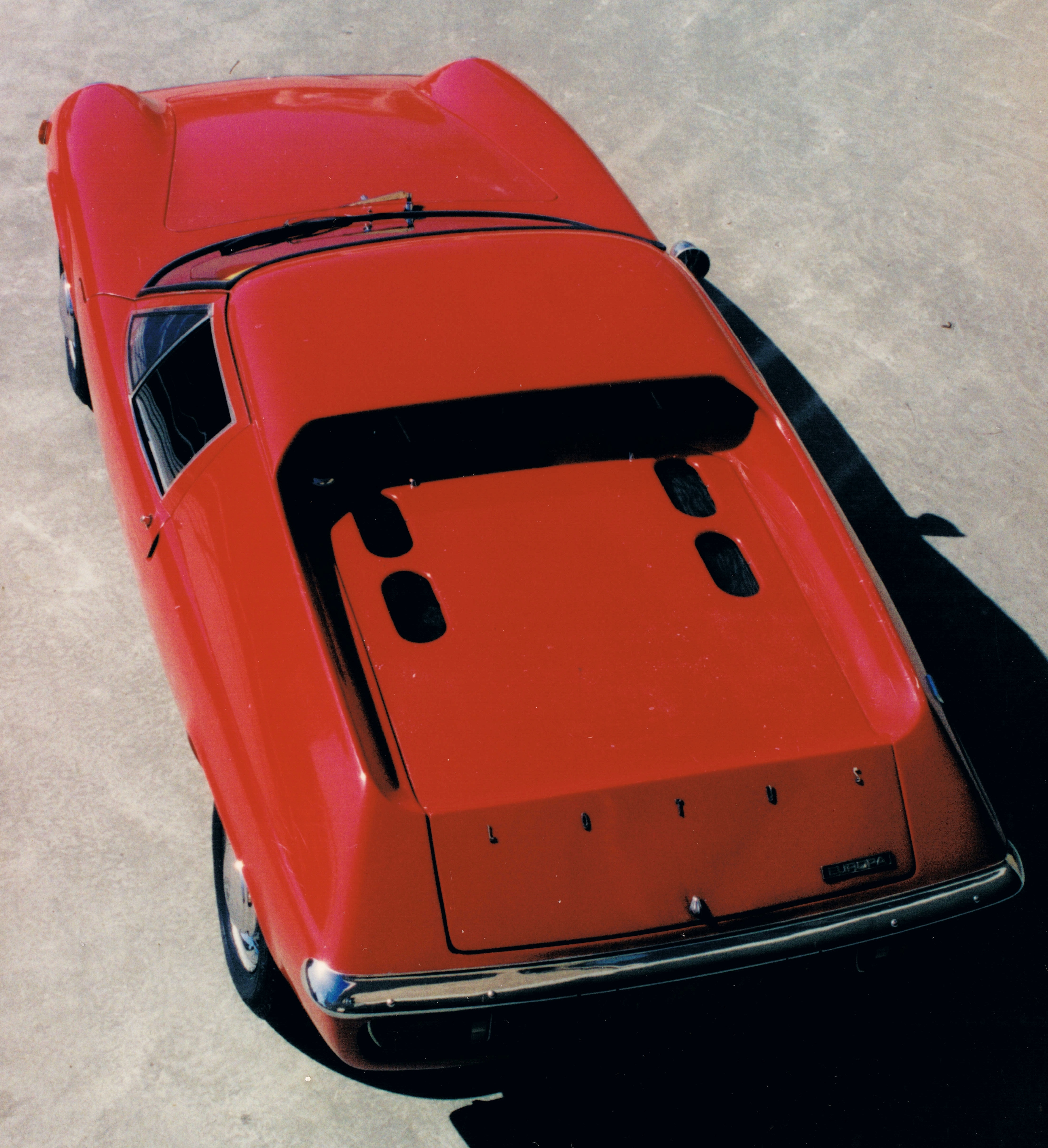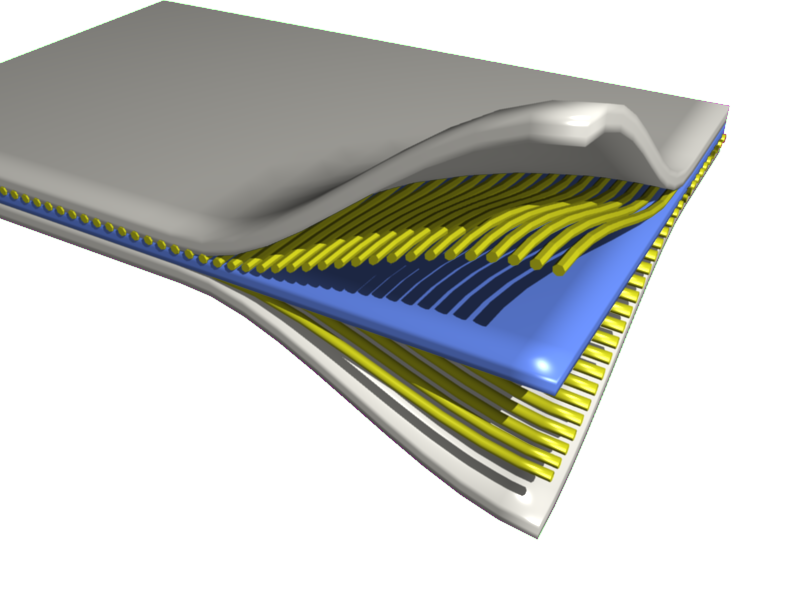|
Lotus Europa
The Lotus Europa name is used on two distinct mid-engine GT cars built by British automobile manufacturer Lotus Cars. The original Europa and its variants comprise the Lotus Types 46, 47, 54, 65 and 74, and were produced between 1966 and 1975. The name was later revived in the Type 121 Europa S, a sports car based on the Lotus Elise produced from 2006 to 2010. Europa (1966–1975) By the mid-1960s, the mid-engine vehicle configuration was well-established as the optimal design for Grand Prix cars, however almost no road vehicles yet used this arrangement. Lotus planned the Europa to be a volume-produced, two-seater mid-engine sports coupe built to reasonable cost, quite an ambitious goal for the time. Like all Lotus vehicles of the era, the Europa was designed and built following Colin Chapman's oft-stated philosophy of automotive design: "Simplify, then add lightness". To this end, a number of ingenious design approaches were made by Lotus to allow it to economically overcom ... [...More Info...] [...Related Items...] OR: [Wikipedia] [Google] [Baidu] |
Lotus Cars
Lotus Group (also known as Lotus Cars) is a British multinational automotive manufacturer of luxury sports cars and electric vehicles. Lotus Group is composed of three primary entities. Lotus Cars, a high-performance sports car company, is based in Hethel, Norfolk. Lotus Technology Inc. (), an all-electric lifestyle vehicle company, headquartered in Wuhan, China, and operates regional facilities in the United Kingdom, the Netherlands, and Germany. Additionally, Lotus Engineering, an engineering consultancy firm, is headquartered at the Lotus Advanced Technology Centre (LATC) located at the University of Warwick, University of Warwick's Wellesbourne Campus. Lotus was founded and owned for many years by Colin Chapman. After his death and a period of financial instability, it was bought by General Motors, then Romano Artioli and then DRB-HICOM through its subsidiary PROTON Holdings, Proton, which owned Lotus from 1996 to 2017. Lotus is currently majority-owned by Chinese multinat ... [...More Info...] [...Related Items...] OR: [Wikipedia] [Google] [Baidu] |
Grand Tourer
A grand tourer (GT) is a type of car that is designed for high speed and long-distance driving with performance and luxury. The most common format is a Front-engine, rear-wheel-drive layout, front-engine, rear-wheel-drive two-door coupé with either a two-seat or a 2+2 (car body style), 2+2 arrangement. Grand tourers are often the coupé derivative of Luxury vehicle, luxury saloon (car), saloons or sedans. Some models, such as the Ferrari 250 GT, Jaguar E-Type, and Aston Martin DB5, are considered classic examples of ''gran turismo'' cars. The term is a near-calque from the Italian language phrase ''gran turismo'', which became popular in the English language in the 1950s, evolving from fast touring cars and Streamliner, streamlined closed sports cars during the 1930s. Origin in Europe The grand touring car concept originated in Europe in the early 1950s, especially with the 1951 introduction of the Lancia Aurelia, Lancia Aurelia B20 GT, and features notable luminaries of Ital ... [...More Info...] [...Related Items...] OR: [Wikipedia] [Google] [Baidu] |
Transaxle
A transaxle is single mechanical device which combines the functions of an automobile's transmission (mechanics), transmission, axle, and differential (mechanics), differential into one integrated assembly. It can be produced in both manual transmission, manual and automatic transmission, automatic versions. Engine and drive at the same end Transaxles are nearly universal in all automobile configurations that have the engine placed at the same end of the car as the driven wheels: the front-engine, front-wheel-drive layout, front-engine/front-wheel-drive; rear-engine, rear-wheel-drive layout, rear-engine/rear-wheel-drive; and rear mid-engine, rear-wheel-drive layout, mid-engine/rear-wheel-drive arrangements. Many mid-engine design, mid- and rear-engine design, rear-engined vehicles use a transverse engine and transaxle, similar to a front-wheel-drive unit. Others use a longitudinal engine and transaxle like Ferrari's 1989 Ferrari Mondial#Mondial t, Mondial t which used a "T" ar ... [...More Info...] [...Related Items...] OR: [Wikipedia] [Google] [Baidu] |
Differential (mechanical Device)
A differential is a gear train with three drive shafts that has the property that the rotational speed of one shaft is the average of the speeds of the others. A common use of differentials is in motor vehicles, to allow the wheels at each end of a drive axle to rotate at different speeds while cornering. Other uses include clocks and analogue computers. Differentials can also provide a gear ratio between the input and output shafts (called the "axle ratio" or "diff ratio"). For example, many differentials in motor vehicles provide a gearing reduction by having fewer teeth on the pinion than the ring gear. History Milestones in the design or use of differentials include: * 100 BCE–70 BCE: The Antikythera mechanism has been dated to this period. It was discovered in 1902 on a shipwreck by sponge divers, and modern research suggests that it used a differential gear to determine the angle between the ecliptic positions of the Sun and Moon, and thus the phase of the Moon. ... [...More Info...] [...Related Items...] OR: [Wikipedia] [Google] [Baidu] |
Gearbox
A transmission (also called a gearbox) is a mechanical device invented by Louis Renault (who founded Renault) which uses a gear set—two or more gears working together—to change the speed, direction of rotation, or torque multiplication/reduction in a machine. Transmissions can have a single fixed-gear ratio, multiple distinct gear ratios, or continuously variable ratios. Variable-ratio transmissions are used in all sorts of machinery, especially vehicles. Applications Early uses Early transmissions included the right-angle drives and other gearing in windmills, horse-powered devices, and steam-powered devices. Applications of these devices included pumps, mills and hoists. Bicycles Bicycles traditionally have used hub gear or Derailleur gear transmissions, but there are other more recent design innovations. Automobiles Since the torque and power output of an internal combustion engine (ICE) varies with its rpm, automobiles powered by ICEs require multiple ... [...More Info...] [...Related Items...] OR: [Wikipedia] [Google] [Baidu] |
Box Beam
A box girder or tubular girder (or box beam) is a girder that forms an enclosed tube with multiple walls, as opposed to an - or H-beam. Originally constructed of wrought iron joined by riveting, they are now made of rolled or welded steel, aluminium extrusions or prestressed concrete. Compared to an -beam, the advantage of a box girder is that it better resists torsion. Having multiple vertical webs, it can also carry more load than an of equal height (although it will use more material than a taller -beam of equivalent capacity). The distinction in naming between a box girder and a tubular girder is imprecise. Generally the term ''box'' girder is used, especially if it is rectangular in section. Where the girder carries its "content" ''inside'' the "box", such as the Britannia Bridge, it is termed a ''tubular'' girder. ''Tubular'' girder is also used if the girder is round or oval in cross-section, such as the Royal Albert Bridge. Where a large box girder contains more t ... [...More Info...] [...Related Items...] OR: [Wikipedia] [Google] [Baidu] |
Composite Material
A composite or composite material (also composition material) is a material which is produced from two or more constituent materials. These constituent materials have notably dissimilar chemical or physical properties and are merged to create a material with properties unlike the individual elements. Within the finished structure, the individual elements remain separate and distinct, distinguishing composites from mixtures and solid solutions. Composite materials with more than one distinct layer are called ''composite laminates''. Typical engineered composite materials are made up of a binding agent forming the ''matrix'' and a Filler (materials), filler material (particulates or fibres) giving ''substance'', e.g.: * Concrete, reinforced concrete and masonry with cement, lime or Mortar (masonry), mortar (which is itself a composite material) as a binder * Composite wood such as glulam and plywood with wood glue as a binder * Reinforced plastics, such as fiberglass and fibre-rein ... [...More Info...] [...Related Items...] OR: [Wikipedia] [Google] [Baidu] |
Lotus Elan
Lotus Elan is the name of two separate ranges of automobiles produced by Lotus Cars. The first series of cars was produced between 1962 and 1975 as a rear-wheel drive vehicle. The second series was produced between 1989 and 1995 as a front-wheel drive vehicle. Timeline The first range of cars (1962–1975) comprised: * Two seater sports cars: ** Lotus ''Type 26'' drop head coupé (DHC) marketed as the Elan 1500, Elan 1600, and Elan S2 (Series 2). ** Lotus ''Type 36'' fixed head coupé (FHC) marketed as the Elan S3, the Elan S4 and, lastly, in a higher performance model, the Elan Sprint. ** Lotus ''Type 45'' drop head coupé, replacing the Type 26, delivered in parallel with the Type 36 in S3, S4 and Sprint form. ** Lotus ''Type 26R'' racing version of the Type 26. * Four seater sports car (rear seats suitable for children): ** Lotus ''Type 50'', fixed head coupé, marketed as the Elan +2. After the S2 was released the original Elan 1500 and Elan 1600 models were typically refer ... [...More Info...] [...Related Items...] OR: [Wikipedia] [Google] [Baidu] |
Fibreglass
Fiberglass (American English) or fibreglass ( Commonwealth English) is a common type of fiber-reinforced plastic using glass fiber. The fibers may be randomly arranged, flattened into a sheet called a chopped strand mat, or woven into glass cloth. The plastic matrix may be a thermoset polymer matrix—most often based on thermosetting polymers such as epoxy, polyester resin, or vinyl ester resin—or a thermoplastic. Cheaper and more flexible than carbon fiber, it is stronger than many metals by weight, non- magnetic, non- conductive, transparent to electromagnetic radiation, can be molded into complex shapes, and is chemically inert under many circumstances. Applications include aircraft, boats, automobiles, bath tubs and enclosures, swimming pools, hot tubs, septic tanks, water tanks, roofing, pipes, cladding, orthopedic casts, surfboards, and external door skins. Other common names for fiberglass are glass-reinforced plastic (GRP), glass-fiber reinforced pla ... [...More Info...] [...Related Items...] OR: [Wikipedia] [Google] [Baidu] |
Backbone Chassis
Backbone tube chassis is a type of automobile construction chassis that is similar to the body-on-frame design. Instead of a two-dimensional Vehicle frame#Ladder Frame, ladder-type structure, it consists of a strong tubular backbone (usually rectangular in Cross section (geometry), cross section) that connects the front and rear Suspension (vehicle), suspension attachment areas. A body is then placed on this structure. It was first used in the English Rover 8hp of 1904 and then the French Simplicia (automobile), Simplicia automobile in 1909. The backbone chassis was extensively developed by Hans Ledwinka who used it in greater numbers on the Tatra 11 and subsequent vehicles. Ledwinka later used backbone frames with central tubes and axles with swinging driveshafts on Tatra (company), Tatra trucks, becoming known as ''Tatra-concept''. Design The truck backbone chassis is a design feature of Czech Tatra (company)#Trucks, Tatra heavy trucks (cross-country, military etc.). Hans Led ... [...More Info...] [...Related Items...] OR: [Wikipedia] [Google] [Baidu] |




